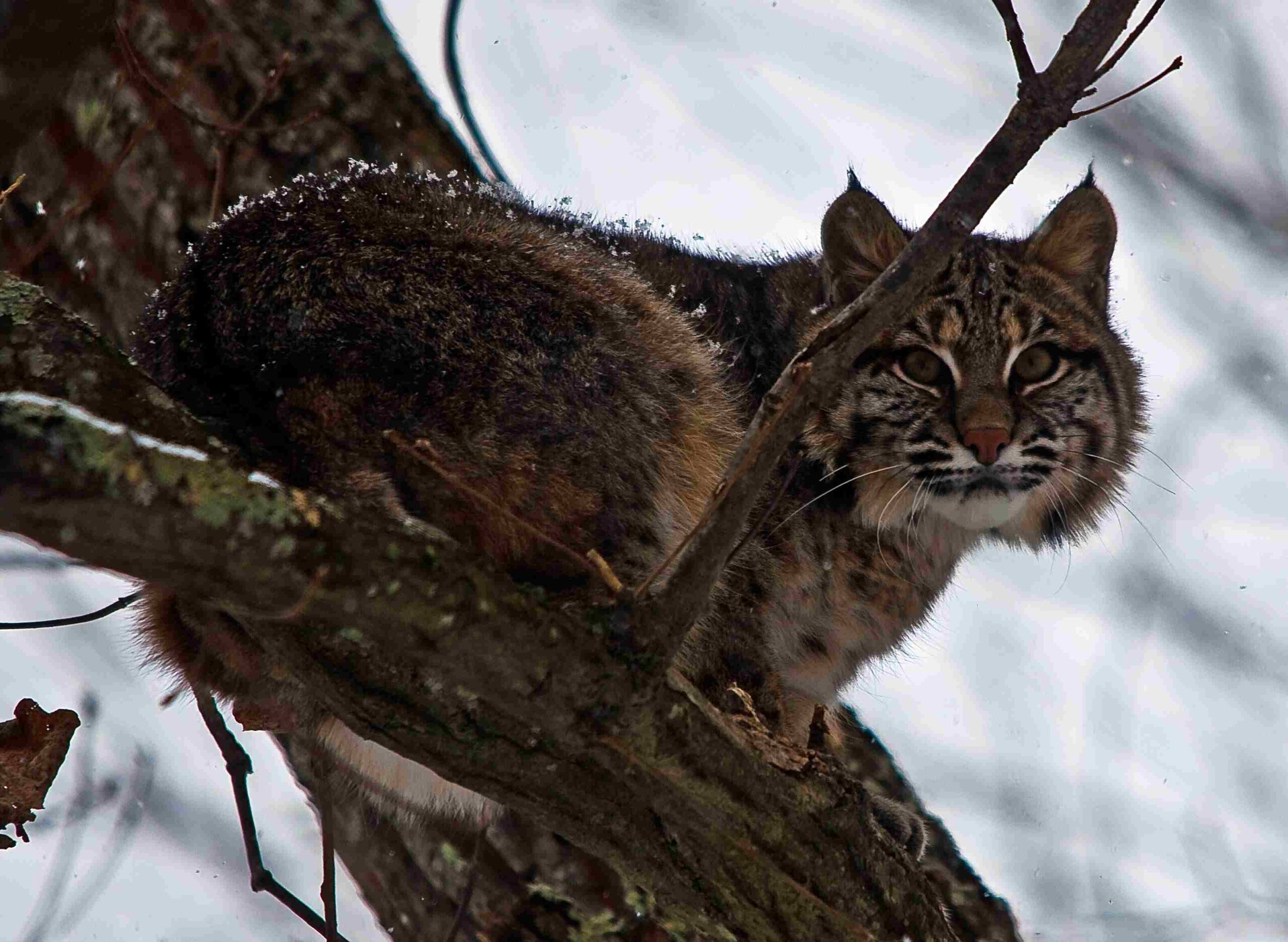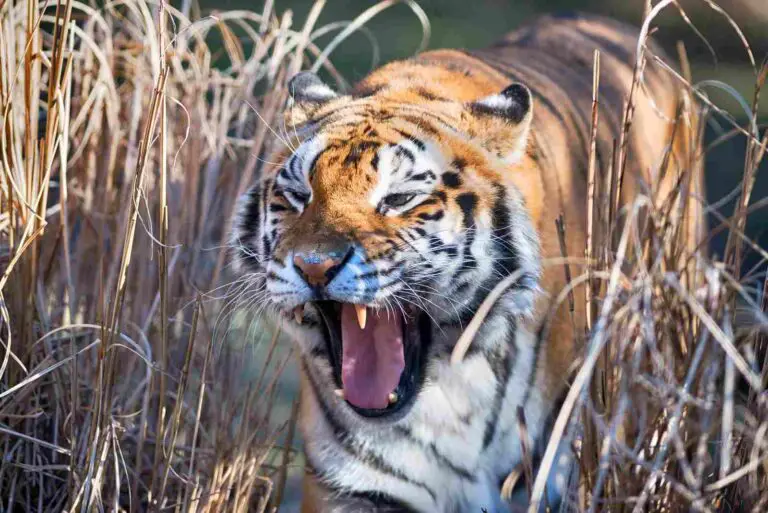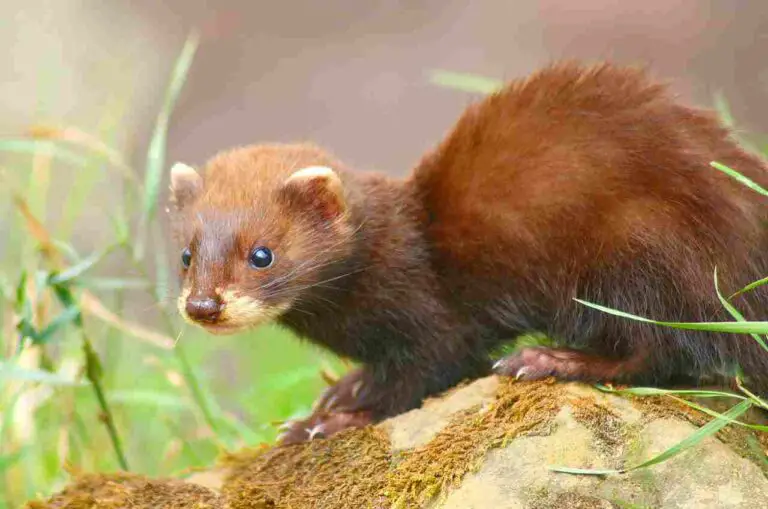25+ Dangerous Animals In Maryland And Their Characteristics
Examples of dangerous animals in Maryland are the Black Widow Spider, which has a venomous bite, and the Copperhead Snake, a venomous pit viper with a distinct copper-colored head. The Bald-Faced Hornet, an aggressive wasp species, can attack in swarms, while the Eastern Box Jellyfish can cause painful stings with its venomous tentacles. The White-Tailed Deer is a risk primarily due to vehicle collisions, and the Portuguese Man o’ War can deliver painful stings even when washed ashore. Each of these creatures requires careful handling or caution when encountered to prevent injuries or other adverse outcomes.
1. Black Widow Spider
The Black Widow Spider is one of the most notorious arachnids found in Maryland. Known for its glossy black body and distinctive red hourglass marking on the underside of its abdomen, the Black Widow can deliver a potent venomous bite. Though bites are rarely fatal to humans, they can cause severe pain, muscle cramps, nausea, and other symptoms that require immediate medical attention. These spiders tend to inhabit dark, undisturbed places like woodpiles, sheds, and crawl spaces, so caution is advised when reaching into such areas. To avoid encounters, it is recommended to wear gloves when working outdoors and inspect dark corners carefully. If bitten, seek medical help right away to manage symptoms and prevent complications.
2. Brown Recluse Spider
The Brown Recluse Spider, commonly found in Maryland, is another dangerous arachnid with a distinct violin-shaped mark on its back. While it is typically reclusive and avoids human contact, its bite can lead to severe necrotic wounds and systemic symptoms like fever, chills, and fatigue. Brown Recluse bites are known to cause tissue damage that may require surgical treatment. These spiders prefer dark, quiet places such as basements, attics, and closets. If you suspect a Brown Recluse bite, seek immediate medical attention to prevent complications and further tissue damage.
3. Copperhead Snake
The Copperhead Snake is a venomous pit viper native to Maryland. It has a distinctive copper-colored head and hourglass-shaped patterns on its body. Copperheads are generally non-aggressive but will strike if provoked or threatened. Their venom can cause pain, swelling, and tissue damage at the bite site, along with other symptoms like nausea and dizziness. Although bites are rarely fatal, they require immediate medical attention. These snakes are typically found in wooded areas, rock piles, and near water sources. To avoid encounters, it’s best to stay on trails when hiking and avoid lifting rocks or logs without caution.
4. Timber Rattlesnake
The Timber Rattlesnake is another venomous snake found in Maryland, recognizable by its rattling tail and distinct banding patterns. These snakes are generally shy and prefer to avoid human contact, but they can become aggressive if threatened. Their venom is highly toxic and can cause severe pain, swelling, and even life-threatening complications. Timber Rattlesnakes are often found in forested areas and rocky outcrops. It’s essential to be cautious when exploring these environments and to back away slowly if you encounter one. Seek immediate medical attention if bitten, as antivenom may be required.
5. Eastern Box Jellyfish

The Eastern Box Jellyfish is a dangerous marine creature found in Maryland’s coastal waters. It has a cube-shaped bell and long, venomous tentacles that can deliver painful stings. Contact with these tentacles can cause intense pain, skin irritation, and even cardiac complications in severe cases. While fatalities are rare, immediate medical attention is recommended if stung. Box Jellyfish are most common in warm, shallow waters, so beachgoers should be cautious and avoid swimming in areas where these jellyfish are known to inhabit. Wearing protective swimwear can reduce the risk of stings.
6. Black Bear
The Black Bear is the largest mammal in Maryland and, while generally not aggressive, can pose a danger if provoked or if it feels threatened. These bears are omnivorous and can be attracted to food sources near homes or campsites. Encounters with Black Bears can lead to aggressive behavior, especially if they are protecting their young or food. It’s essential to store food securely when camping and to avoid approaching or feeding bears. If you encounter a Black Bear, make yourself appear larger, speak in a calm, firm voice, and slowly back away without turning your back. In rare cases of aggression, use bear spray and seek safety immediately.
7. Bald-Faced Hornet
The Bald-Faced Hornet is a large and aggressive wasp species found in Maryland. It is known for its black and white coloration and the ability to build large, hanging paper nests in trees and structures. Bald-Faced Hornets are highly protective of their nests and will attack in swarms if they perceive a threat. Their stings are painful and can cause severe allergic reactions in some individuals. If you encounter a nest, it’s best to keep your distance and contact professional pest control for removal. If stung, monitor for signs of allergic reactions and seek medical help if needed.
8. Yellow Jacket
The Yellow Jacket is another aggressive wasp species found in Maryland, known for its yellow and black stripes and ability to sting repeatedly. Yellow Jackets build nests in the ground, in walls, and under eaves, and they are highly territorial. They become more aggressive in late summer and early fall, often attacking in groups. Yellow Jacket stings are painful and can cause severe allergic reactions, including anaphylaxis. To avoid encounters, be cautious when walking in grassy areas or near buildings where nests may be hidden. If you are stung, remove the stinger and seek medical attention if allergic symptoms occur.
9. Wasps (Various species)
Maryland is home to various wasp species, some of which can be aggressive and dangerous. Wasps are known for their slender bodies and the ability to sting multiple times, which can lead to painful reactions and, in severe cases, anaphylaxis. Wasps often build nests in trees, under eaves, or in the ground. They are typically active during warmer months and can become aggressive when their nests are disturbed. To minimize the risk of stings, avoid areas where wasps are present and keep food covered when outdoors. If stung, remove the stinger and seek medical help if allergic reactions occur.
10. Wild Boar
Wild Boar, or feral hogs, are large, aggressive mammals found in some parts of Maryland. They are known for their sharp tusks and can pose a threat to both humans and property. Wild Boars are highly territorial and can become aggressive if threatened, especially during mating season or when protecting their young. These animals are known to cause extensive damage to crops and landscapes, and they can carry diseases that affect humans and livestock. If you encounter a Wild Boar, avoid approaching or provoking it. Seek safety and contact wildlife authorities for assistance.
11. White-Tailed Deer (due to vehicle collisions)
The White-Tailed Deer is common in Maryland and, while not inherently aggressive, can pose a significant danger due to vehicle collisions. Deer often cross roads, especially during mating season, creating a risk for drivers. Collisions with deer can cause serious injuries and significant vehicle damage. To avoid accidents, be alert when driving through wooded or rural areas, particularly at dawn and dusk when deer are most active. Use high beams when possible and slow down if you spot deer near the road. If a collision occurs, pull over safely and contact emergency services if needed.
12. Coyote
Coyotes are adaptable canids found in Maryland, known for their cunning behavior and ability to thrive in various environments. While they typically avoid humans, coyotes can pose a threat to pets and livestock, and they may become aggressive if they feel threatened or cornered. Coyotes are most active at night and often travel in small packs. To reduce the risk of encounters, keep pets indoors at night and secure garbage bins. If you encounter a coyote, make loud noises, wave your arms, and back away slowly without turning your back. If a coyote exhibits aggressive behavior, contact wildlife authorities for advice and assistance.
13. Red Fox
The Red Fox is a common sight in Maryland, with its vibrant red fur and bushy tail. While generally shy and reclusive, foxes can become aggressive if threatened or if they carry rabies. They may also pose a threat to small pets and livestock. Red Foxes are most active at dawn and dusk, often hunting for food in suburban and rural areas. To reduce the risk of encounters, secure trash bins, keep pets indoors, and avoid leaving food outside. If you encounter a Red Fox, maintain a safe distance and make loud noises to scare it away. If the fox exhibits aggressive or erratic behavior, contact wildlife authorities immediately.
14. Great White Shark
The Great White Shark is one of the most feared predators in the ocean, occasionally found in Maryland’s coastal waters. Known for its massive size and powerful jaws, the Great White can pose a significant threat to swimmers, surfers, and divers. Although shark attacks are rare, they can be fatal. Great Whites are typically attracted to areas with abundant prey, such as seals and fish. To reduce the risk of shark encounters, avoid swimming in areas where these sharks are known to frequent, stay in groups, and avoid wearing shiny jewelry or bright colors. If you see a shark in the water, calmly exit and notify lifeguards or authorities.
15. Bull Shark
The Bull Shark is another potentially dangerous shark species found in Maryland’s coastal and brackish waters. Known for its stocky build and aggressive nature, the Bull Shark can pose a risk to swimmers and fishermen. These sharks are unique in that they can tolerate freshwater, allowing them to enter rivers and estuaries. Although attacks are rare, they can be severe due to the Bull Shark’s powerful bite. To reduce the risk of encounters, avoid swimming in murky or turbid waters and be cautious when fishing in areas known for Bull Sharks. If you see a shark in the water, exit calmly and report it to authorities.
16. Portuguese Man o’ War
The Portuguese Man o’ War is a dangerous marine organism sometimes found in Maryland’s coastal waters. Although it resembles a jellyfish, it’s actually a colonial organism composed of specialized polyps. Its long, venomous tentacles can cause painful stings, leading to symptoms like intense pain, redness, and in severe cases, respiratory distress or cardiac complications. The Portuguese Man o’ War floats on the water’s surface and can be carried ashore by wind and currents. If you encounter one on the beach, avoid touching it, even if it appears dead, as the tentacles can still deliver a painful sting. If stung, rinse with vinegar or seawater and seek medical attention if symptoms persist or worsen.
17. Blue Crab (when mishandled)
The Blue Crab is a common sight in Maryland’s Chesapeake Bay, renowned for its culinary value. However, when mishandled, the crab’s powerful claws can deliver a painful pinch that can cause bruising or even break the skin. To avoid injury, handle crabs carefully, using tongs or thick gloves when necessary. If pinched, wash the wound and monitor for signs of infection.
18. Northern Water Snake
The Northern Water Snake is a non-venomous snake found in Maryland, typically near lakes, rivers, and wetlands. Although not venomous, it can be aggressive when threatened and may bite in self-defense. Bites can be painful and cause bleeding but are generally not harmful. To avoid bites, maintain a safe distance and do not provoke or attempt to handle these snakes. If bitten, clean the wound and seek medical advice if necessary.
19. Mosquitoes (disease transmission)
Mosquitoes are ubiquitous in Maryland, especially in warm, humid areas. They can carry diseases such as West Nile virus and Eastern equine encephalitis, which can be transmitted through bites. To reduce the risk of mosquito bites, use insect repellent, wear long sleeves and pants, and avoid standing water where mosquitoes breed. If bitten, monitor for symptoms like fever or rash, and seek medical attention if signs of illness occur.
20. Ticks (disease transmission)
Ticks are common in Maryland’s forests and grassy areas, and they can transmit diseases like Lyme disease and Rocky Mountain spotted fever through bites. To reduce the risk of tick bites, wear long clothing, use insect repellent, and perform thorough tick checks after spending time outdoors. If bitten, remove the tick carefully with tweezers and monitor for symptoms such as fever or a bulls-eye rash, seeking medical attention if needed.
21. Fire Ants
Fire Ants are aggressive insects found in Maryland, known for their painful stings and tendency to attack in groups. They build large mounds in open areas, and their stings can cause intense pain, swelling, and in some cases, severe allergic reactions. To avoid stings, be cautious when walking through grassy or open areas, and avoid disturbing ant mounds. If stung, treat the area with cold compresses, and seek medical attention if allergic reactions occur.
22. Horseshoe Crab (spines can be harmful)
The Horseshoe Crab is a unique marine creature found in Maryland’s coastal areas. Although generally harmless, its spines can cause injury if stepped on or mishandled. To avoid injury, watch for Horseshoe Crabs when walking on the beach and avoid handling them without proper protection. If injured by a spine, clean the wound and monitor for signs of infection.
23. Snapping Turtle
The Snapping Turtle is a large and aggressive turtle species found in Maryland, often inhabiting ponds and wetlands. Known for its powerful jaws, the Snapping Turtle can deliver a painful bite if provoked or handled improperly. To avoid injury, maintain a safe distance and avoid attempting to handle or feed these turtles. If bitten, clean the wound and seek medical attention if needed.
24. Bobcat
The Bobcat is a wild feline found in Maryland’s forested areas, known for its stealth and sharp claws. Although typically reclusive, it can become aggressive if cornered or threatened. Bobcats can pose a threat to pets and livestock. To avoid encounters, keep pets indoors at night and secure outdoor enclosures. If you encounter a Bobcat, maintain a safe distance and do not attempt to approach or feed it. Contact wildlife authorities if it shows signs of aggression.
25. Striped Skunk
The Striped Skunk is a common mammal in Maryland, recognizable by its black fur with white stripes and its pungent spray. Although not inherently dangerous, skunks can spray a foul-smelling liquid if threatened, which can cause irritation to eyes and skin. They may also carry rabies, posing a health risk. To avoid encounters, keep trash bins sealed and avoid approaching or provoking skunks. If sprayed, wash thoroughly with deodorizing soap and seek medical attention if symptoms persist.
26. Striped Bass (sharp fins)
The Striped Bass, or rockfish, is a popular game fish in Maryland’s coastal and freshwater areas. While prized by anglers, its sharp fins can cause injury if mishandled. To avoid injury, handle Striped Bass with care, using gloves or tools to avoid being cut by its fins. If injured, clean the wound and monitor for signs of infection. Seek medical advice if needed.
| Animal |
Key Characteristics
|
| Black Widow Spider |
Venomous bite causing severe pain and cramps. Found in dark, undisturbed places.
|
| Brown Recluse Spider |
Venomous bite causing necrotic wounds. Typically found in basements and attics.
|
| Copperhead Snake |
Venomous snake with distinctive copper head. Found in wooded areas and near water sources.
|
| Timber Rattlesnake |
Venomous snake with rattling tail. Found in forested areas and rocky outcrops.
|
| Eastern Box Jellyfish |
Venomous tentacles causing painful stings. Found in coastal waters.
|
| Black Bear |
Large mammal, can be aggressive when threatened. Found in forested areas.
|
| Bald-Faced Hornet |
Aggressive wasp species. Builds large nests and attacks in swarms.
|
| Yellow Jacket |
Aggressive wasp species. Stings repeatedly. Builds nests in the ground and walls.
|
| Wasps (Various species) |
Includes multiple species. Known for painful stings. Can be aggressive.
|
| Wild Boar |
Large, aggressive mammals with sharp tusks. Can be territorial.
|
| White-Tailed Deer |
Common deer species. Poses risk due to vehicle collisions.
|
| Coyote |
Adaptable canid. Can be aggressive if threatened or if protecting territory.
|
| Red Fox |
Typically reclusive. Can pose a threat to small pets and may carry rabies.
|
| Great White Shark |
Large ocean predator. Can pose a threat to swimmers and surfers.
|
| Bull Shark |
Aggressive shark species. Can tolerate brackish and freshwater.
|
| Portuguese Man o’ War |
Venomous tentacles causing painful stings. Found in coastal waters and beaches.
|
| Blue Crab |
Powerful claws that can cause injury if mishandled. Found in Chesapeake Bay.
|
| Northern Water Snake |
Non-venomous snake. Can be aggressive if threatened.
|
| Mosquitoes |
Known for disease transmission through bites. Found in warm, humid areas.
|
| Ticks |
Can transmit diseases like Lyme disease. Found in forests and grassy areas.
|
| Fire Ants |
Aggressive ants with painful stings. Found in open areas.
|
| Horseshoe Crab |
Spines can cause injury if mishandled. Found in coastal areas.
|
| Snapping Turtle |
Large turtle with powerful jaws. Found in ponds and wetlands.
|
| Bobcat |
Wild feline. Can become aggressive if threatened.
|
| Striped Skunk |
Mammal known for its pungent spray. May carry rabies.
|
| Striped Bass |
Game fish with sharp fins that can cause injury if mishandled.
|















